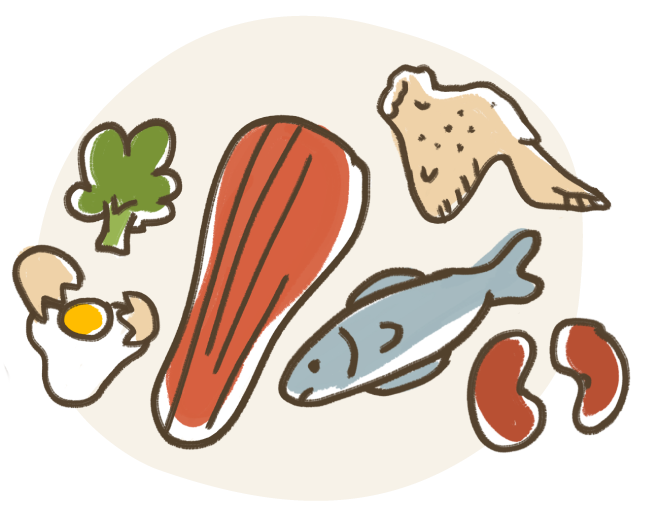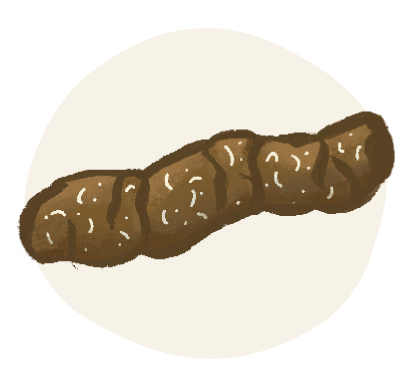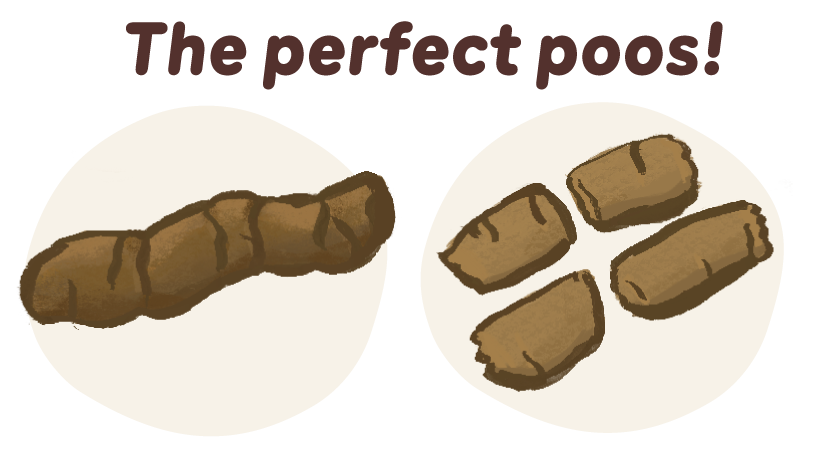Why is my dog’s poo white?


A common question we see online is “why is my dog’s poo white?” Dog stools that are white in colour can indicate a variety of things from being diet-related to something more serious like parasites. Cleaning up and inspecting your dog’s poo is a necessary part of caring for your best friend.
So, why IS my dog’s poop white?
What causes dog poo to turn white?
Too much calcium
One of the most common causes of white poop is a diet that is high in calcium, if your dog’s stools are being released with a white, chalk-like consistency this can be caused by too much calcium (excess bones) in their diet.
Most of the time, white poo caused by too much calcium isn’t too concerning for dogs, but too much calcium may cause constipation. Hard stools can be difficult and uncomfortable for your dog to pass and may also indicate dehydration. Raw diets have a high moisture content, helping greatly with their hydration levels. Some first timers can struggle with the change due to the bone being introduced to their diet– in this case, it can be helpful to add a small amount of coconut oil (try ½ a teaspoon per meal) to assist with passing while their systems are adjusting. However, if you’re noticing your dog straining and noticeably uncomfortable, it is advised to visit your Vet.
Make sure that raw bones are appropriate size for your dog and are factored into their overall diet and adjust to suit, as this can be a reason for too much calcium in your dog's diet. Depending on the size of your dog, a raw meaty bone like a chicken wing, may be an entire meal for a small breed dog or a meal topper for a larger dog. Check out this raw bone chart to find the most suitable bones for your dog.
A raw diet

An effect of having a diet made up of highly digestible ingredients for your pet is that more of what goes in is absorbed and utilised so less comes out the other end. The digestive system of our pups is designed to extract as many good nutrients from their diet as possible. The stools of raw-fed dogs are firmer, smaller and nearly odourless compared to a kibble-fed dog. However, it is common for raw-fed dogs to produce stools that turn white within 24 hours or so.
Other causes of white poop
Environmental exposure
If your dog’s poo is not white instantly but turns white over 24 hours or so, it is most likely changing colour due to environmental conditions such as sunlight, humidity, or even mould. Nothing to worry about.
Eating something they shouldn’t
If your dog’s poop has turned white all of a sudden and you have not made any changes to their regular diet, it may be because they have eaten something they should not have. Consuming items white in colour such as paper towels, toilet paper or tissues can all cause a change in the colour or appearance of your dog’s poo. However, these items will generally be easily identifiable in the stools and should pass through without causing harm. Nevertheless, you should contact your Vet if you think your pet has consumed something and is at risk of blockage.
Parasites

If you’re noticing what looks like white grains of rice in your dog’s poo and they haven’t eaten anything they shouldn’t have, this could be a sign of intestinal worms. The best way to determine intestinal worms would be to take a sample of your dog’s poo into your Vet so they can verify and diagnose appropriately. Under the supervision and recommendation of your vet, appropriate and regular intestinal worming may be required.
You can read Dr Nicole Rous' article on worms and worming treatments.
Healthy dog poop

What does a healthy dog poop look like? Colour can give a great insight into your dog’s health and digestive system, you should be looking for a light to dark brown colour in your dog’s stools – the perfect poo. The consistency of your dog’s stools should be firm and easy to pick up. Stools that are large and sloppy can be common in dogs that are fed diets high in carbohydrates and processed diets.
Keeping your dog’s poo looking healthy and consistent is so important to the overall wellbeing of your furry bestie. Regular poop inspections are recommended to make sure your dog’s health is on the right track, you can even print out our Dog Poo Chart below and leave somewhere handy for regular checks. Remember, it’s not uncommon to see some loose stools when transitioning your pet to a new diet but if it’s persistent or very watery then consult your vet.

The information provided in this article is not meant to replace veterinary advice. Please chat to your vet if you're concerned about your pet's health or in this case, your dog's poo.
Got a question for our team? Head over to our Contact Page to submit an enquiry to our friendly Customer Care team. If you're looking for advice from other Big Dog raw feeders, join our community Big Dog Pet Foods Facebook Group!
For the perfect dog poo - check out our range of healthy raw pet foods!
